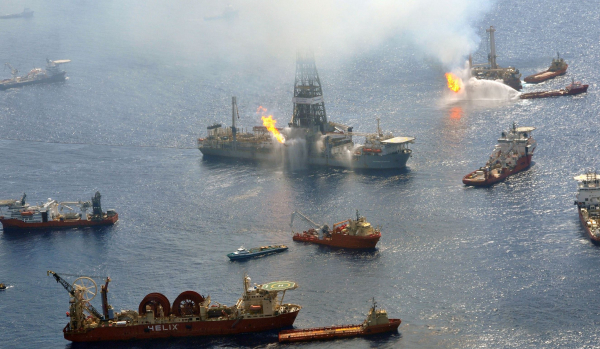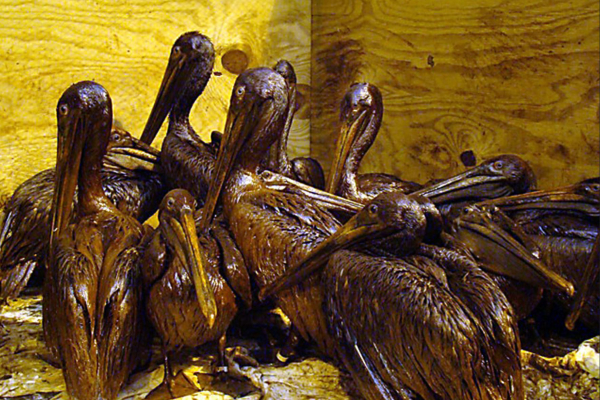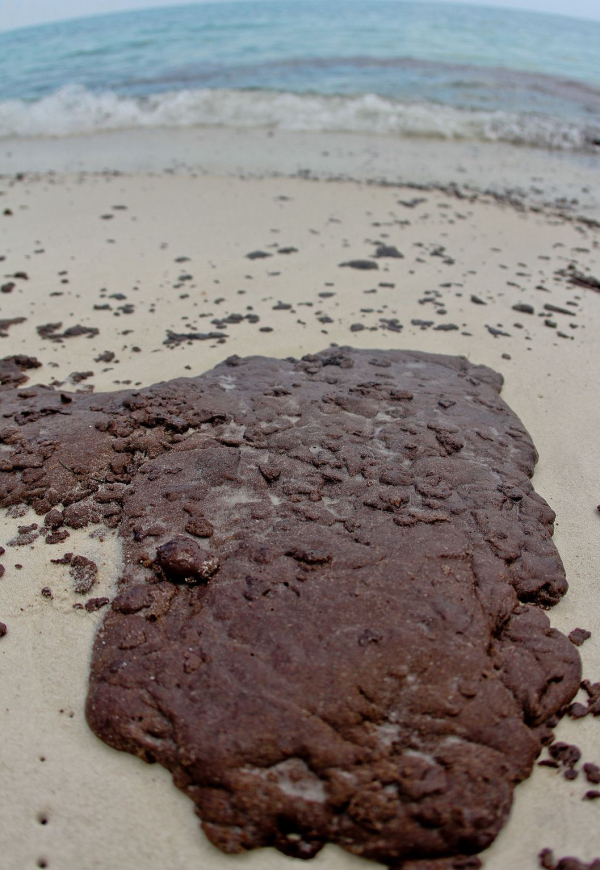
There’s no question that the Gulf Horizon oil rig explosion in 2010 was a massive human and environmental disaster that caused long-lasting damage to the people who rely on a healthy Gulf of Mexico as well as to the fish and wildlife that live there. Eleven rig workers died, and an estimated total of 134 million gallons of crude oil spewed into the Gulf over 3 months before the break could be capped.
The oil spread over thousands of square miles of water, floating on the surface as well as sinking to the bottom in gummy blobs. Much of it coated shorelines and beaches and estuaries, killing both the plants and the wildlife that lived there, from the largest birds to the smallest crabs and shrimp. It was the worst environmental disaster in U.S. history. Hundreds of commercial fishermen were put out of business and seaside restaurants, marinas and resorts went belly up.
There was not only the measurable damage but also untold damage to the BP image, and to the whole fossil fuel industry, as the Gulf Horizon became the poster child of all the well-meaning forces who want to see an end to the use of petroleum-based power immediately, rather than at the measured real-world pace that it’s actually going to take.
BP, primary owner of the rig, has been forced to pay in some $18 billion to the five Gulf states since then, an historic fine.

But oddly enough, Nature has shown amazing restorative power with a lot of help from human friends.
Multiple enormous habitat projects funded by the BP cash split between the states have been built among the Gulf estuaries over the last decade, and lots more are planned from Florida to Texas. Meanwhile the natural flushing action of the Gulf Loop Current and offshore weather has removed all apparent traces of the crude oil. Inshore and offshore fisheries are thriving. State marine patrol agencies and fisheries departments have had new funding for boats and equipment.
Gulf fishing for both pelagics like marlin, wahoo and yellowfin tuna and nearshore species like king mackerel and tarpon has come back to pre-spill levels by most reports. Reef fish numbers are still a bone of contention, but most fishery managers say that their numbers are now almost totally dependent on fishing pressure, rather than any leftover environmental damage from the spill. Some states like Alabama would argue fishing is better than before the spill thanks to natural increase of some species as well as continued artificial reef building.
Louisiana anglers have long depended on the offshore oil rigs as massive artificial reefs that concentrate everything from tuna to cobia to all sorts of bottom species.

Not only that, but shoreside facilities have hugely benefited from the enormous infusions of cash from BP fines. Piers, beach walkways, estuarine habitat improvement and planting of sea grasses and marsh plants have all been paid for with the funding.
All this said, nobody has forgotten Gulf Horizon, and the disaster was impetus for Florida putting an end to any possibility of the oil rigs that dot the western gulf continuing their march into Sunshine State waters.
Nobody will ever say that the BP disaster was an acceptable part of doing business in offshore oil, but it perhaps had a far better outcome than anyone envisioned back in 2010.
— Frank Sargeant
Frankmako1@gmail.com
